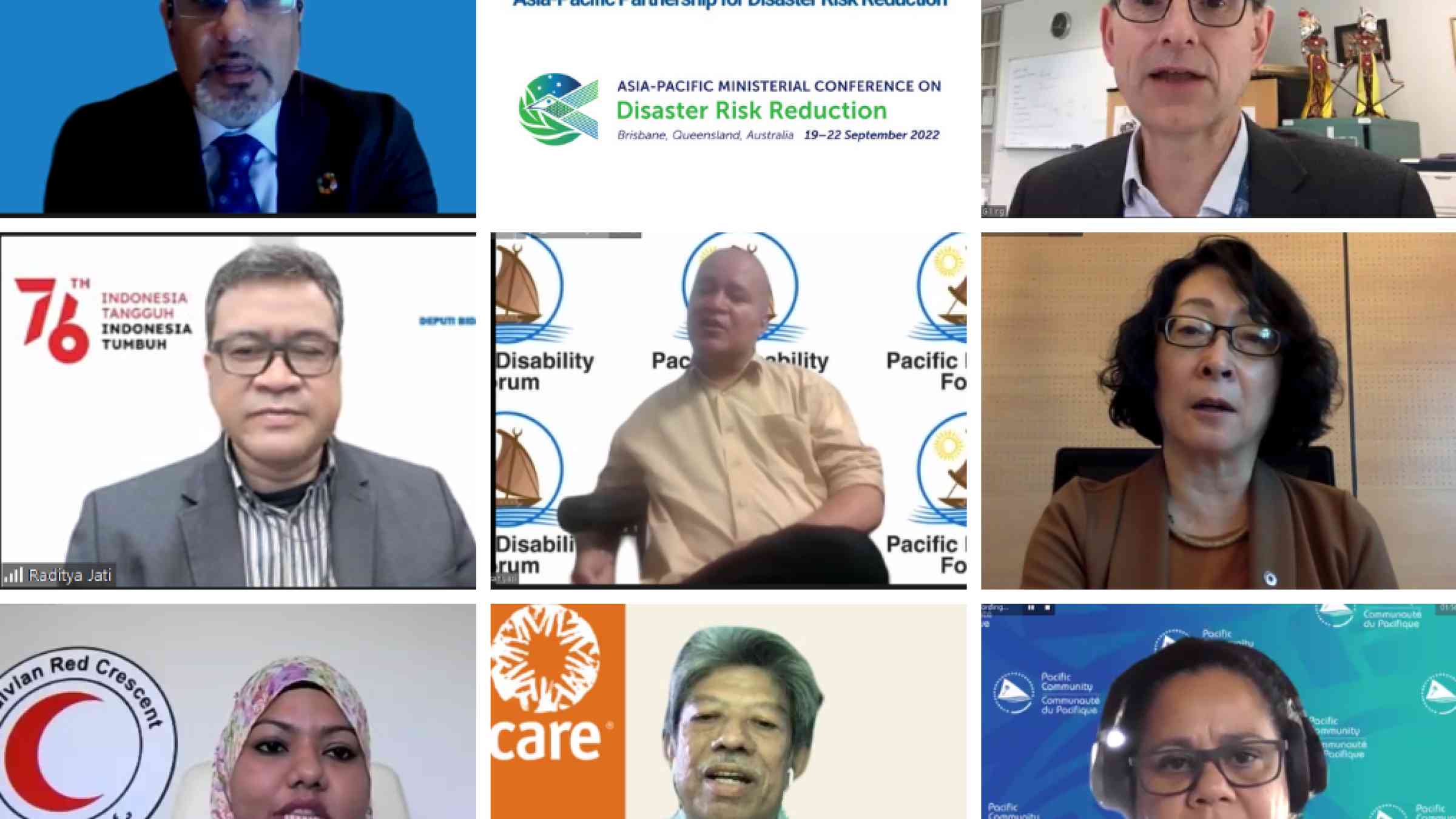With a new action plan in hand Asia-Pacific eyes opportunities in 2022

The Asia-Pacific Partnership for Disaster Risk Reduction (APP-DRR) Forum concluded with a strong commitment to accelerate the implementation of the Sendai Framework by leveraging upcoming opportunities and with a confirmation of the dates for the 2022 Asia-Pacific Ministerial Conference on Disaster Risk Reduction, which will be hosted by Australia in the city of Brisbane.
As the Asia-Pacific continues to grapple with the COVID-19 pandemic and growing extreme weather events as a result of climate change, 168 delegates from across the region convened for the APP-DRR Forum on 8 and 9 December by the UN Office for Disaster Risk Reduction (UNDRR) and the Government of Australia.
A key outcome of the gathering was the launch of the Asia-Pacific Action Plan 2021-24 for the Implementation of the Sendai Framework. The new Action Plan, which replaces the 2018-2020 plan adopted in Mongolia, was developed through a series of consultations with Member States, regional organizations and stakeholder groups.
“I congratulate you on the launch of the Asia-Pacific Action Plan 2021-24. The plan not only lays out immediate actions that can be taken but also identifies accelerators to support them. Key among them is the need to harness the tremendous opportunity of COVID-19 recovery packages to imbed resilience into development,” said Ms. Mami Mizutori, Special Representative of the Secretary-General for Disaster Risk Reduction.
A second key outcome was the announcement by Australia of the dates of the Asia-Pacific Ministerial Conference on Disaster Risk Reduction (APMCDRR) which will be organized from 19 to 22 September 2022 in the city of Brisbane in Queensland, Australia.
Convened by UNDRR and hosted by Australia, the APMCDRR is the main regional platform for strengthening cooperation around disaster risk reduction in Asia-Pacific. It will be the first regional ministerial since the 2018 conference held in Mongolia and the first to explicitly include the Pacific region.
“One of Australia’s commitments is towards inclusivity, and I want to see the conference allow all groups to have a say. We know marginalized groups are disproportionately impacted by disasters, so we look forward to hearing from those affected,” said Mr. James Gilling, Humanitarian Coordinator of the Australian Department of Foreign Affairs and Trade (DFAT).
The Forum also included two panel discussions; one on the need for inclusive financing for disaster risk reduction and a second on implementing a comprehensive approach to integrating climate and disaster risk reduction.
Participants were urged to take advantage of opportunities to strengthen regional cooperation towards reducing disaster losses and ensuring that no country or group is left behind.
“It is important that the region leverage every opportunity to review its progress and actions by building on the lessons of the past, exchanging good practices, and adopting new and innovative approaches,” said Mr. Marco Toscano-Rivalta, Chief of the UNDRR Regional Office for Asia and the Pacific.
Those opportunities include the recently launched Mid-Term Review of the Sendai Framework, which was mandated by the UN General Assembly and represents an opportunity for Member States to engage in frank and inclusive discussions on where they are and what needs to be done by 2030 to reduce disaster losses.
The second opportunity is the 2022 Global Platform for Disaster Risk Reduction, which will be hosted by Indonesia from 23 to 28 May 2022. As the first global platform since the pandemic, and positioned between COPs 26 and 27, this event will be a chance to elevate the voices of Asia-Pacific, as the most disaster-prone region in the world.
The third opportunity revolves around creating a marked improvement in risk-proofing developing economies by supporting the Least Developed Countries to address their climate and disaster vulnerabilities. As the region has many graduating and graduated countries, their development pathways need to be protected through risk reduction, risk-informed investments and investments for resilience. To that end, mobilizing regional and sub-regional cooperation is critical to capitalize on the region’s rich experiences and diversity.
Day two of the Forum included statements from participants reflecting on what actions they would take to support the implementation of the regional Action Plan and leverage the Mid-term Review process.
Closing the two day Forum, Mr. Toscano-Rivalta called on participants to seize the Mid-Term Review process as “an opportunity to strengthen the public demand for disaster risk reduction, and give clear and strong support to governments, local governments and all stakeholders for greater action.”
The APP-DRR Forum, formerly known as the ISDR Asia Partnership (IAP) Forum, was set up in 2003 as an informal multi-stakeholder forum to promote disaster risk reduction in the Asia and Pacific region. Organised and convened by the UNDRR Regional Office for Asia and the Pacific, the forum has grown to become one of the most important regional platforms for disaster risk reduction in the region.